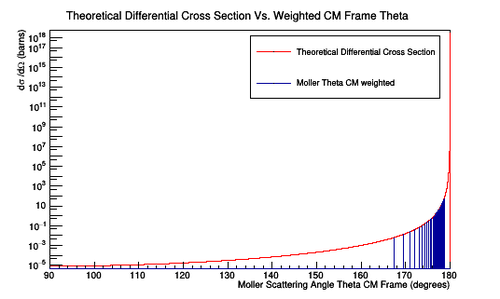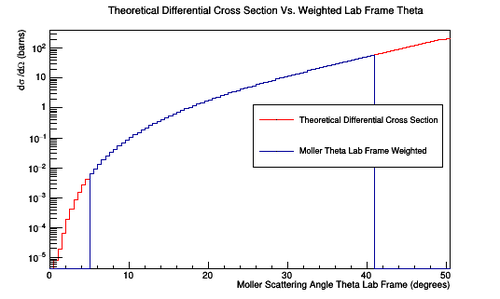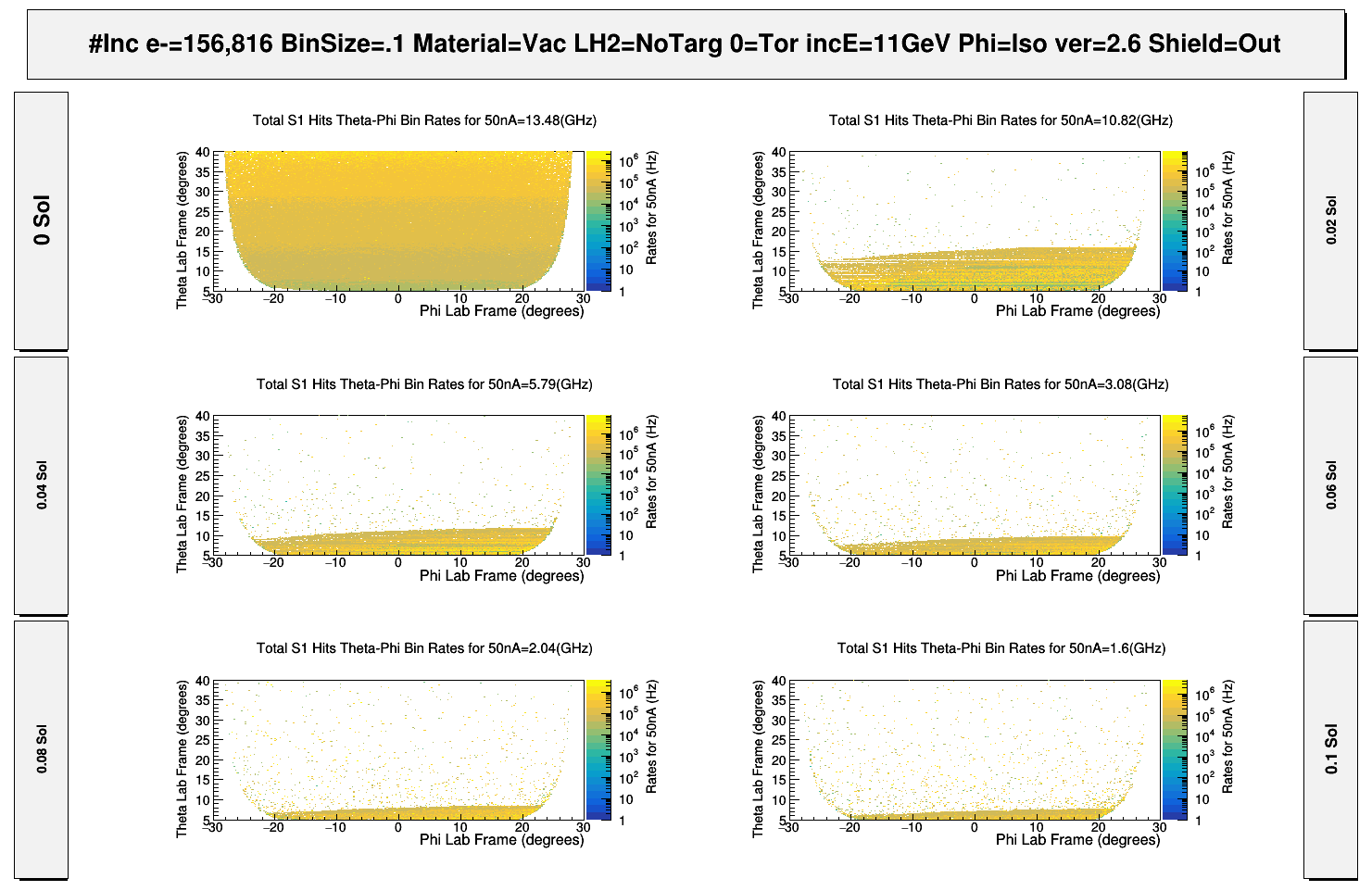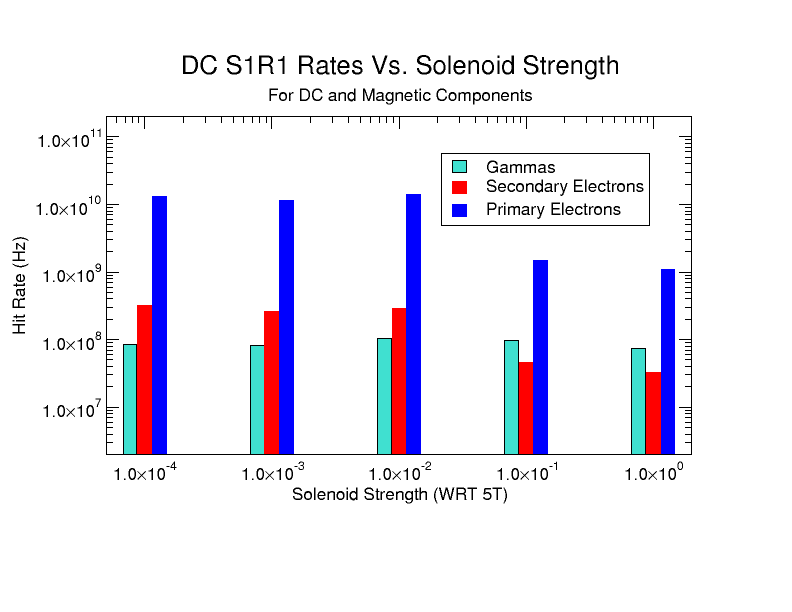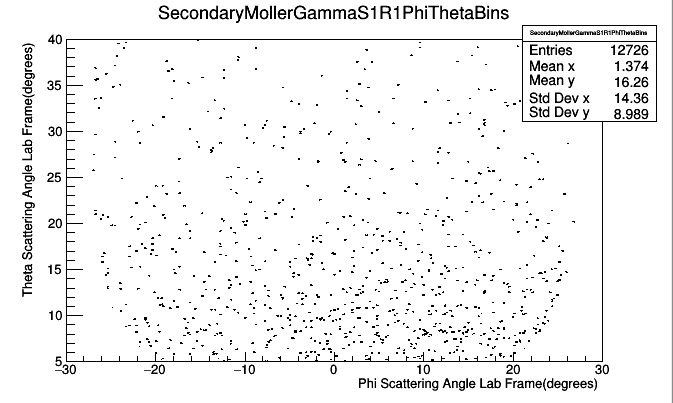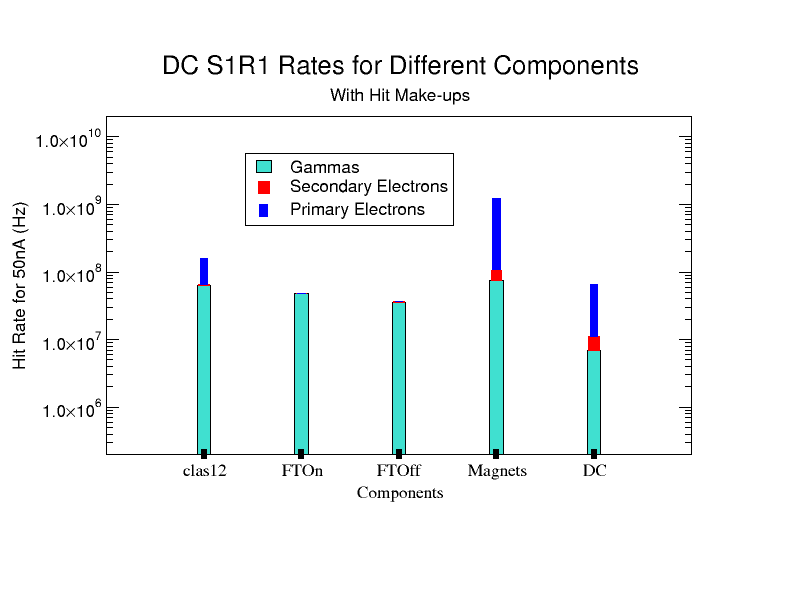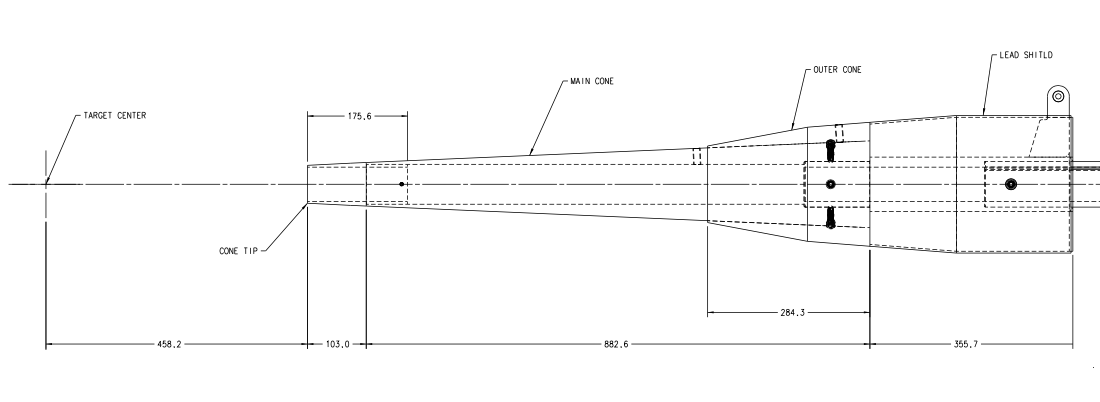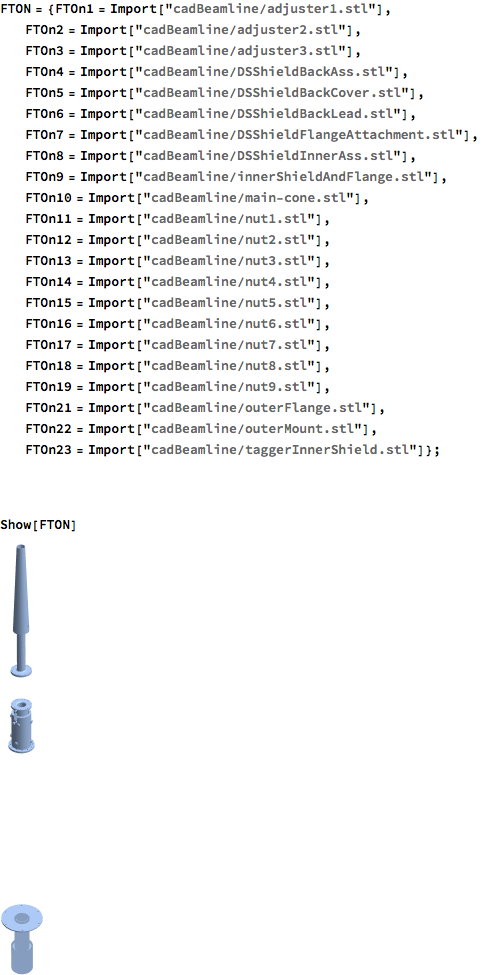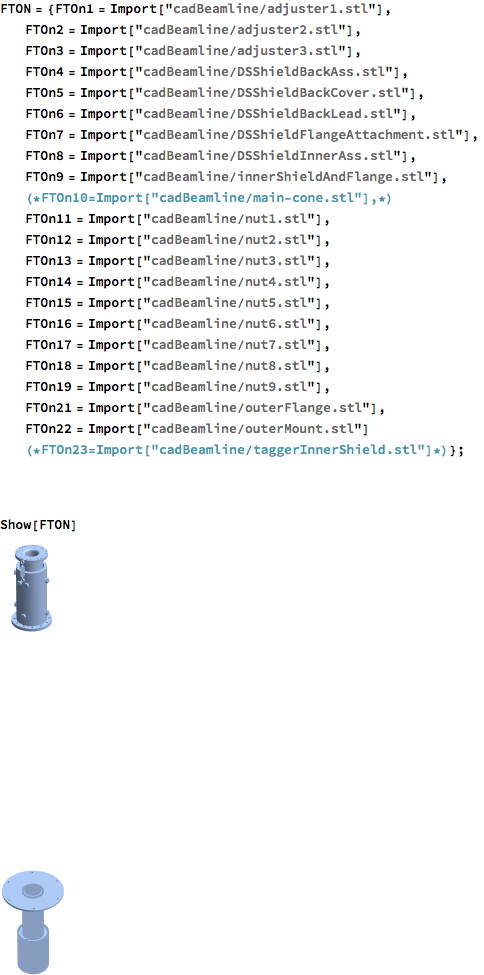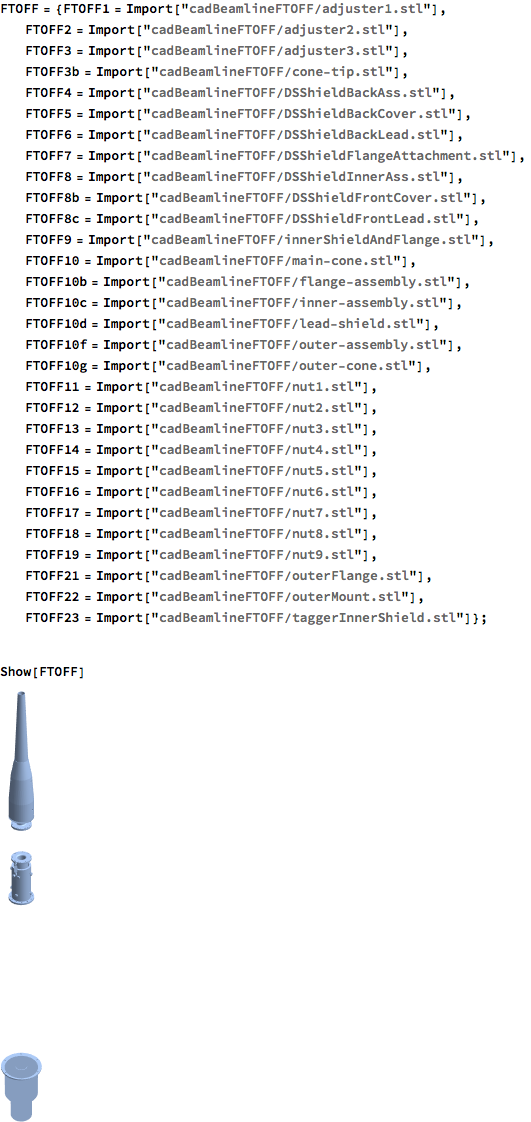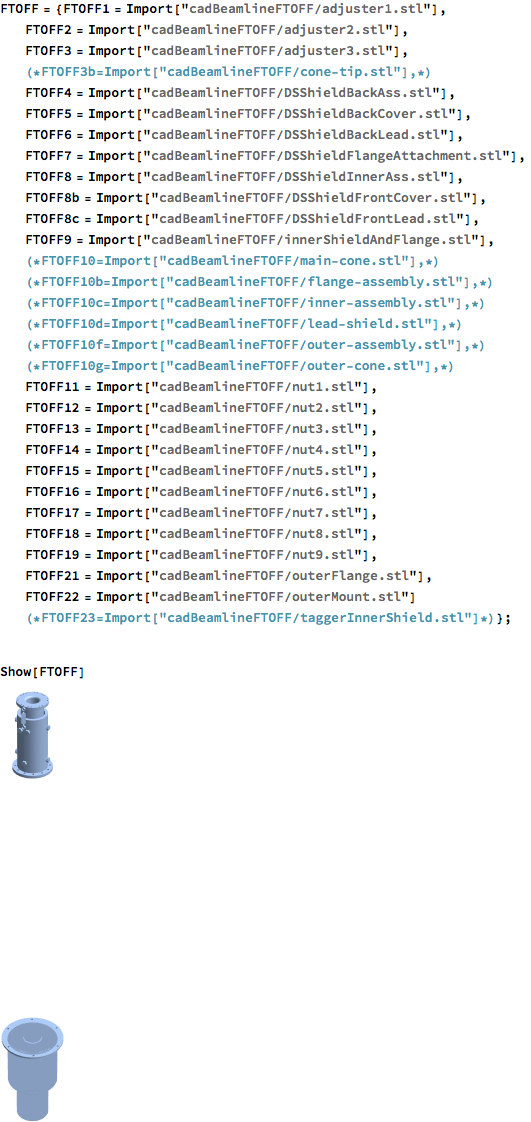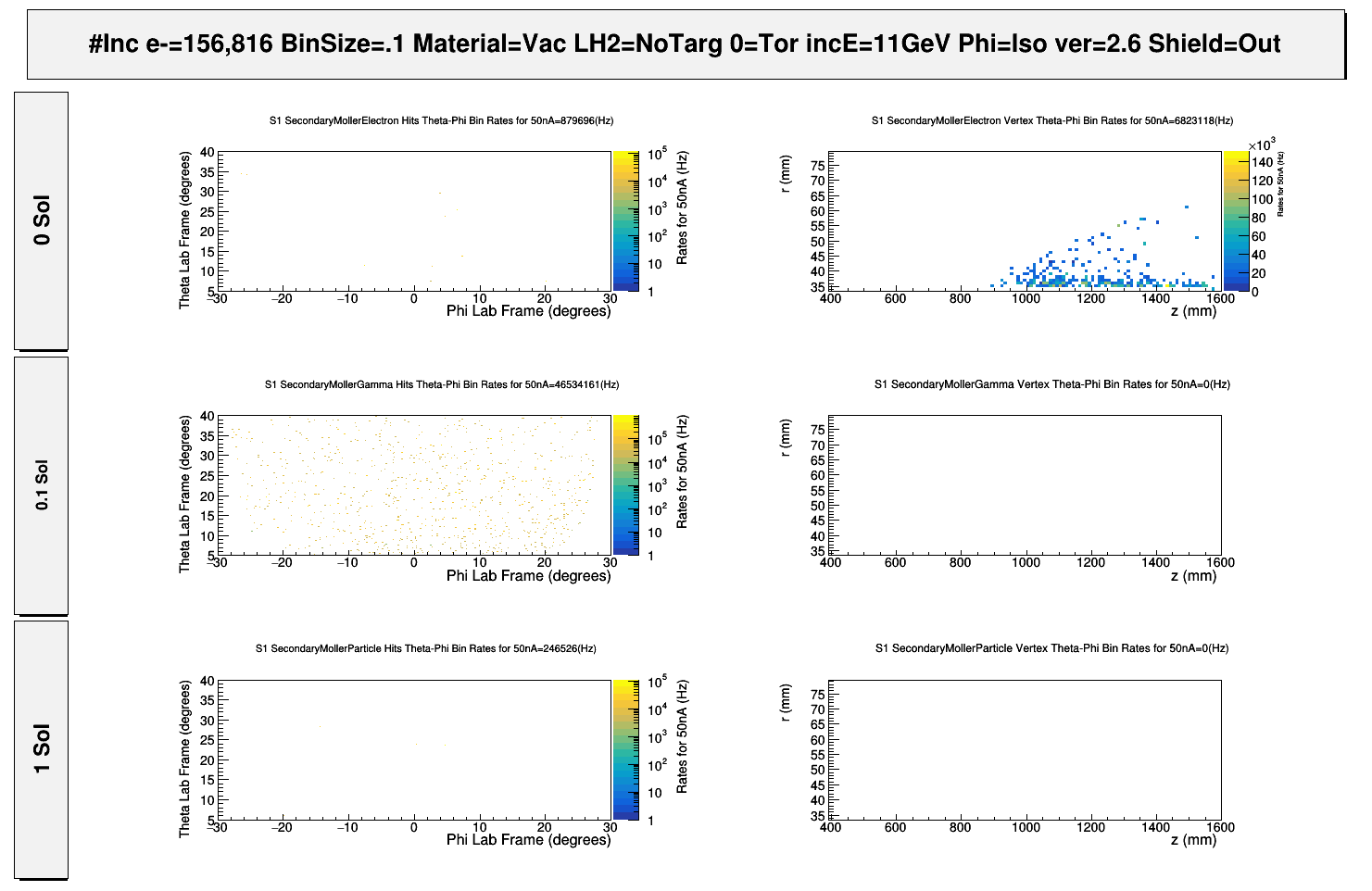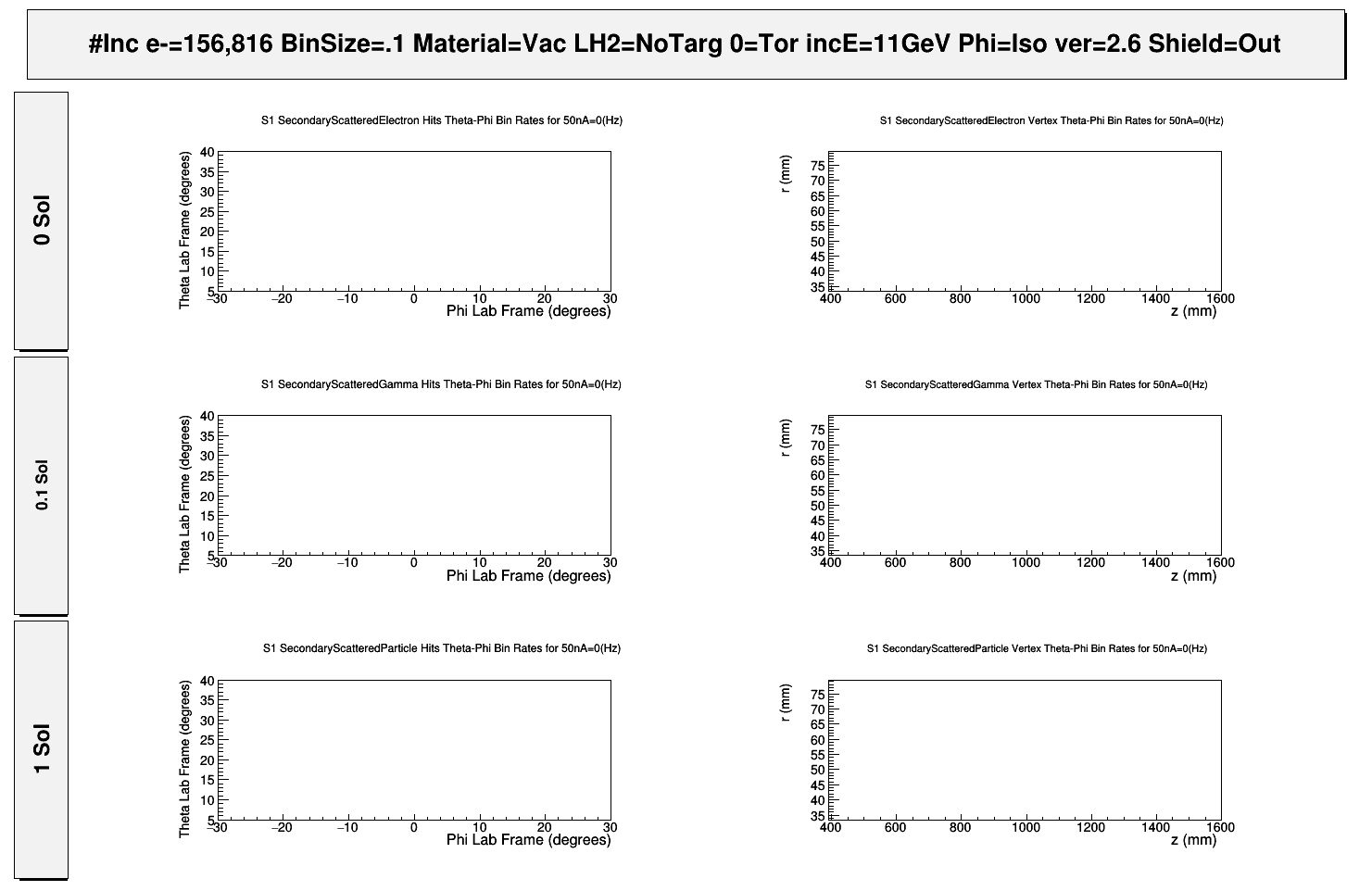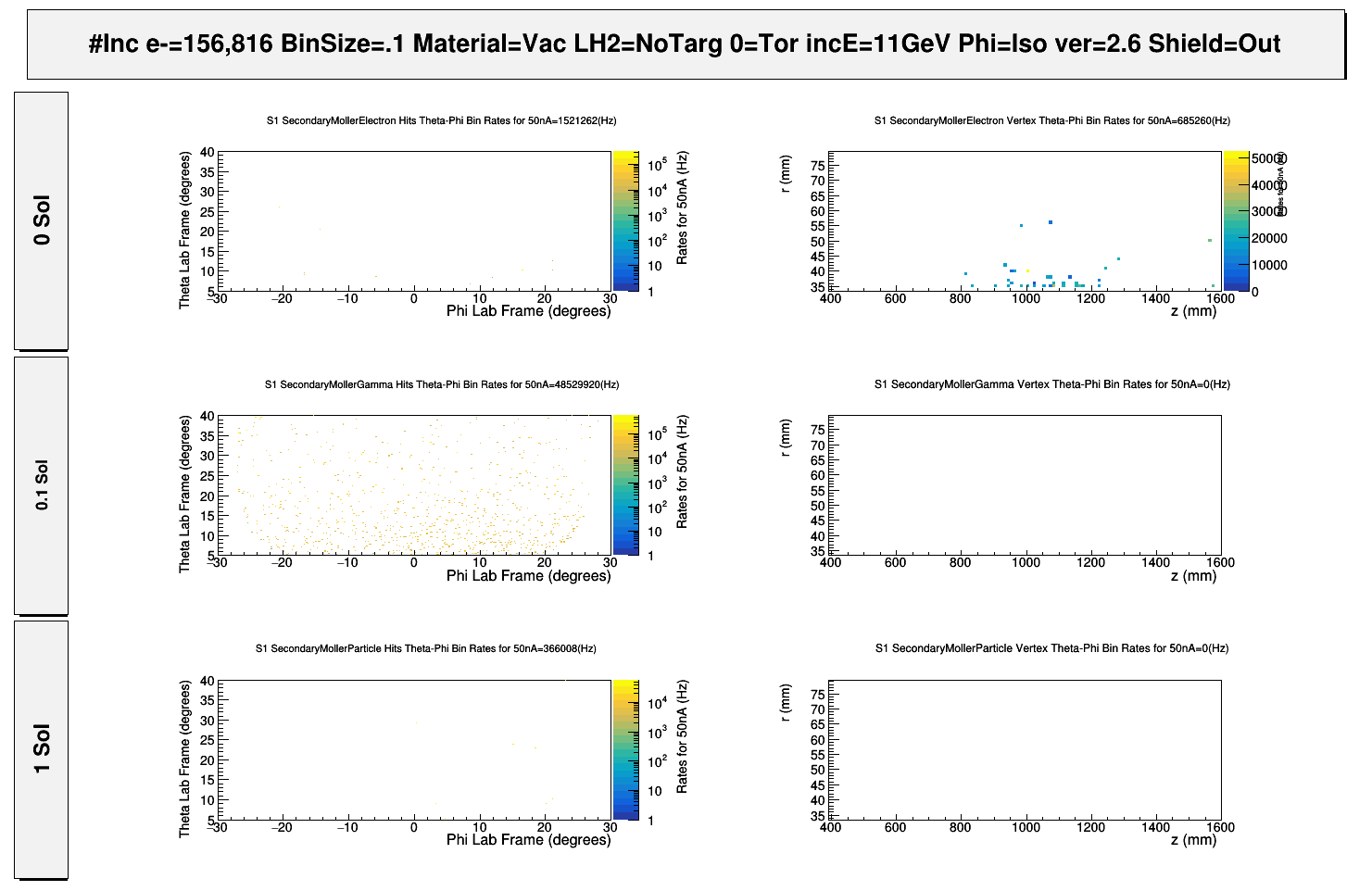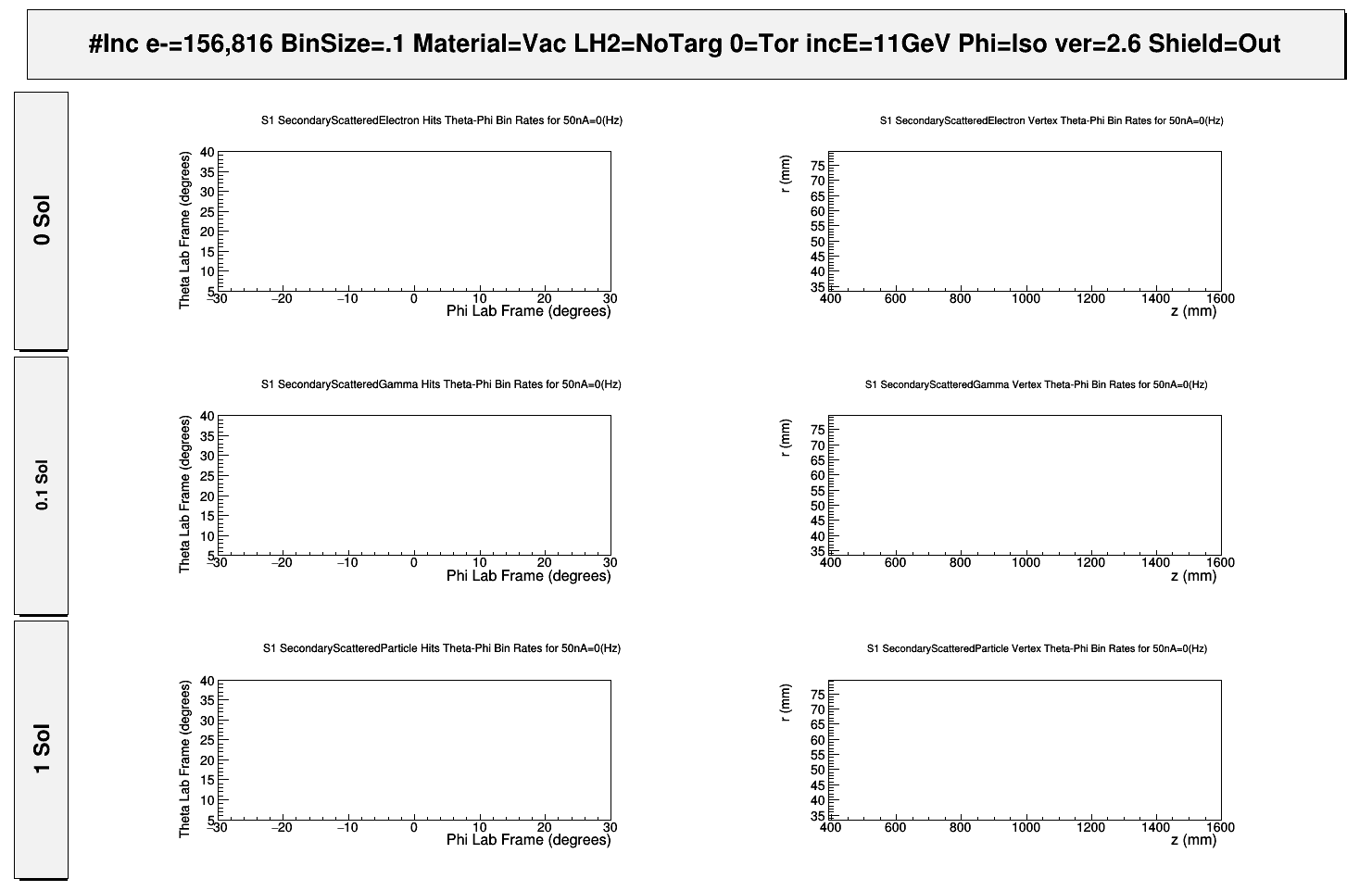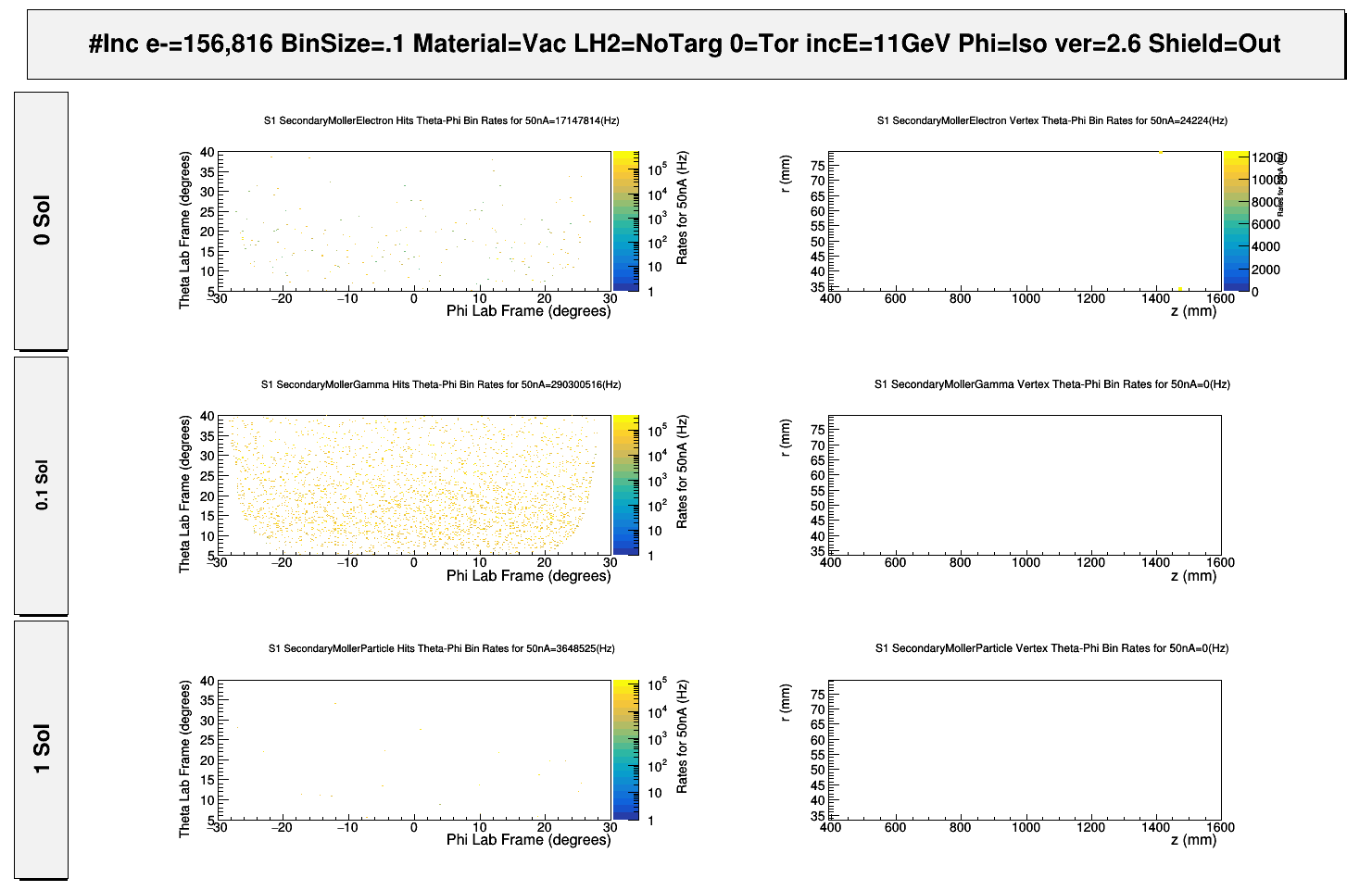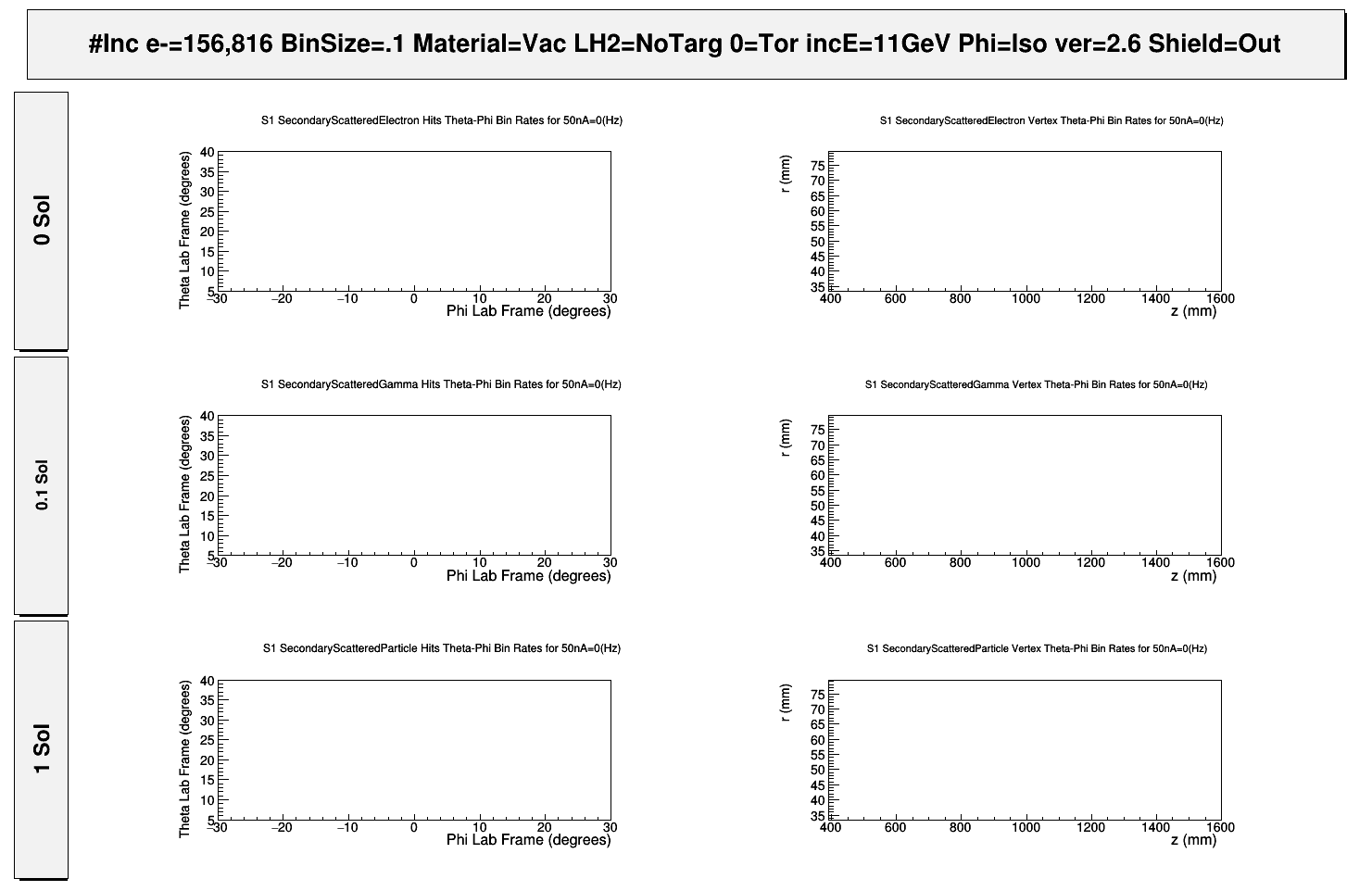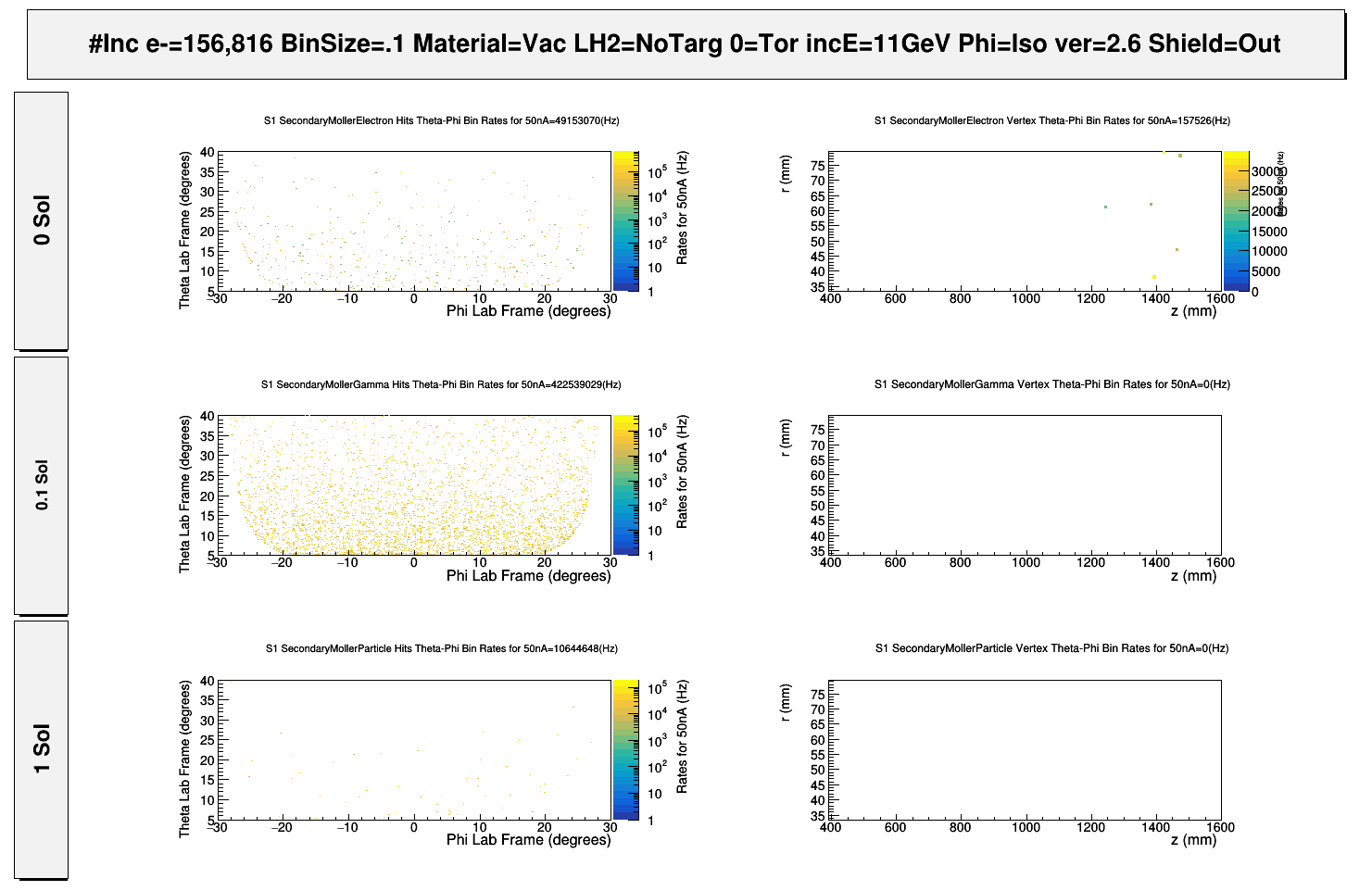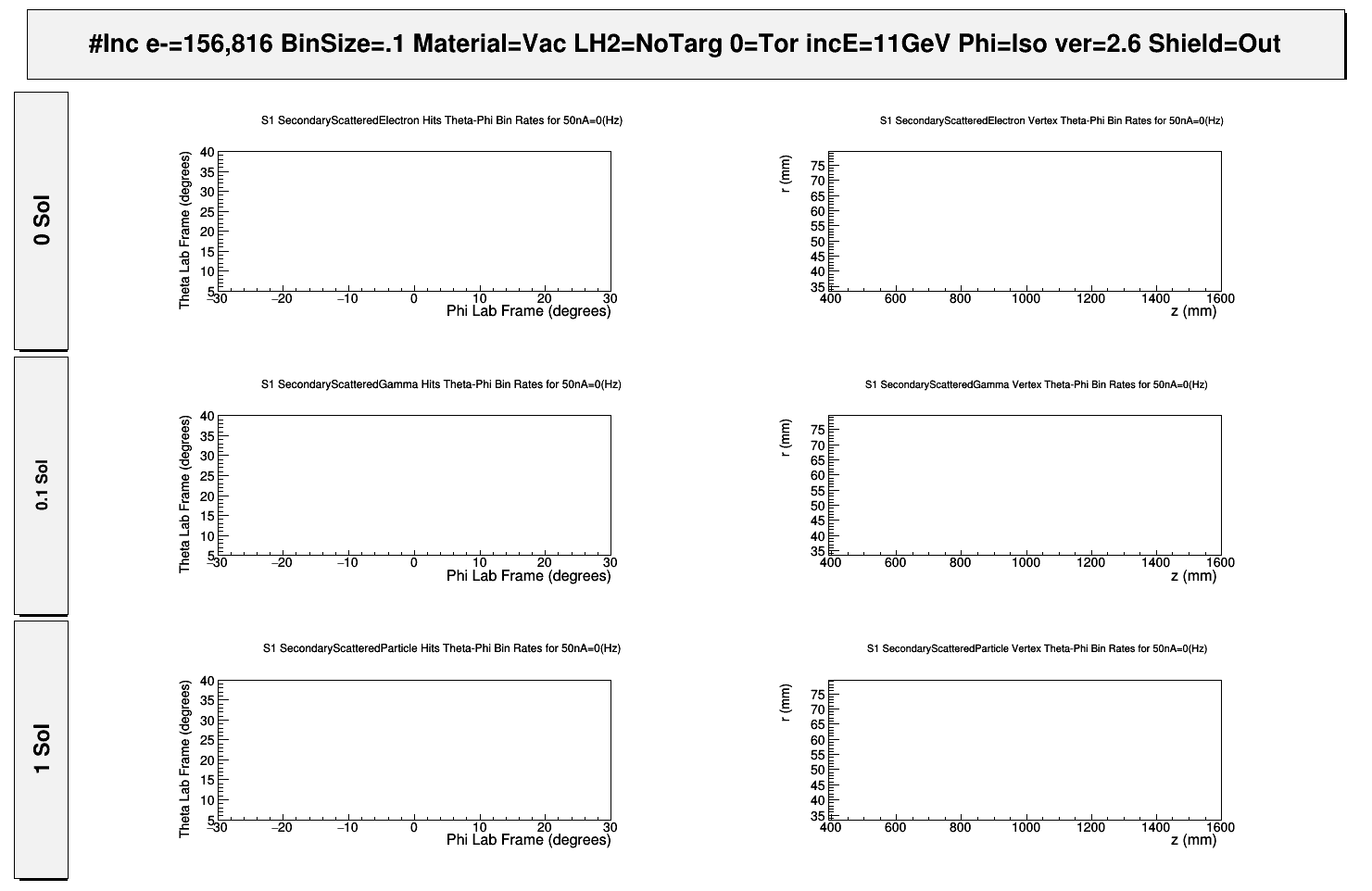Difference between revisions of "Mlr Summ TF"
| Line 168: | Line 168: | ||
| − | + | ==Moller Electrons below 5 degrees== | |
== Moller events using an dual polarized target geometry with Raster== | == Moller events using an dual polarized target geometry with Raster== | ||
Revision as of 20:39, 22 October 2018
VanWasshenova_Thesis#Mlr_Summ_TF
Moller Summary
Scattering Xsect
https://wiki.iac.isu.edu/index.php/Converting_to_barns
Weight the E-vs-Theta plot with Xsect
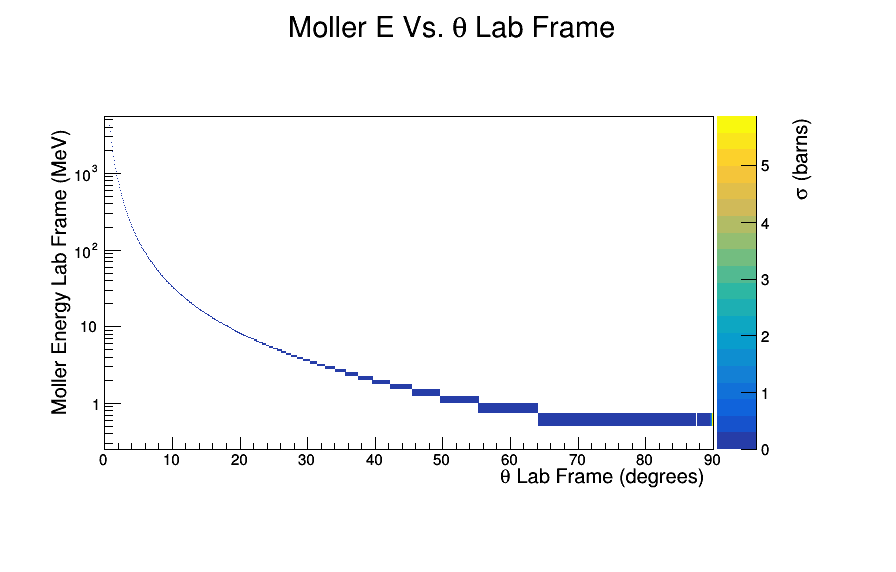
Moller electron radius -vs- Momentum (Full solenoid and relativistic)
Baseline
Moller events using an lH2 target geometry No Raster
DC hits -vs- Solenoid
Starting the clas12 Moller simulation with a simple configuration, most components downstream with respect to the drift chambers are taken out of the gcard file. The remaining components, the Drift Chamber (DC), the Solenoid, and the Magnetic Components (CAD) are all that remain as shown below. The Torus field is held at zero Tesla, and the Solenoid field strength is increased from 0 to it's max of 5T.
As the Solenoid field strength increases, the Moller electrons are forced to into a helical path of decreasing radius, effectively "rotating" off the DC face. The relative value of the field changes the direction field, which in turn causes slightly more hits to be deposited on one side versus the other. This effect is only noticeable in that the neighboring sectors to S1 were not simulated.
However, as the field reaches maximum, there are still particles which are found at higher values of that would have been expected to have remained after the effects of the Solenoid. To understand the causes of this phenomena, the hits on Region 1 can be broken into the most common types of particles that are detected; Primary Moller electrons and secondary electrons and photons caused by the Moller electron. Looking more closely at this particle makeup as the solenoid field is increased, we can see that the ratio of primary electrons to total hits decreases while the ratio of photons to total hits increases.
Without Magnet Components
To examine the possibility that scattering is the cause of the noise, the simulation is further simplified by removing the magnetic components stored in the CAD directory.
To effectively determine the cause of the remaining particles in S1R1 the hit particles' vertex points can be recorded producing a tomography plot. A changing field is still useful in that the lack of number of hits at high solenoid field strength would make determining the physical cause difficult.
Photons Hits in R1
Secondary Electron Hits in R1
Primary Moller Electron Hits in R1
CLAS12 Conditions
Images taken from cadBeamline/cadBeamlineFTOFF
Determining what the shield components are using Mathematica, gcards are modified to call Modified cadBeamline and cadBeamlineFTOFF files without the shield components.
FTOn_ShieldIn:
FtOn_ShieldOut:
FTOff_ShieldIn:
FTOff_ShieldOut:
According to cad.gxml within cadBeamline: For the FTON configurration the cone is shifted by -238.8mm
For integrating the rate within the shield area, this implies:
For the components of FTOff, starting at the cone-tip and running to the lead shield
For the component of FTOn, starting at the main-cone (the only component)
FTOn ShieldIn
FTOff ShieldIn
FTOn ShieldOut
FTOff ShieldOut
Moller Electrons below 5 degrees
Moller events using an dual polarized target geometry with Raster
Photon Hits in R1 when Raster size has radius of 0.2 cm
Moller rate -vs- length of a single taerget
0.5 cm radius -vs- Z
Target is a one 0.5 cm radius cylinder of length Z.
By how much does the moller rate change at full field ?
Latest Stuff
VanWasshenova_Thesis#Mlr_Summ_TF
